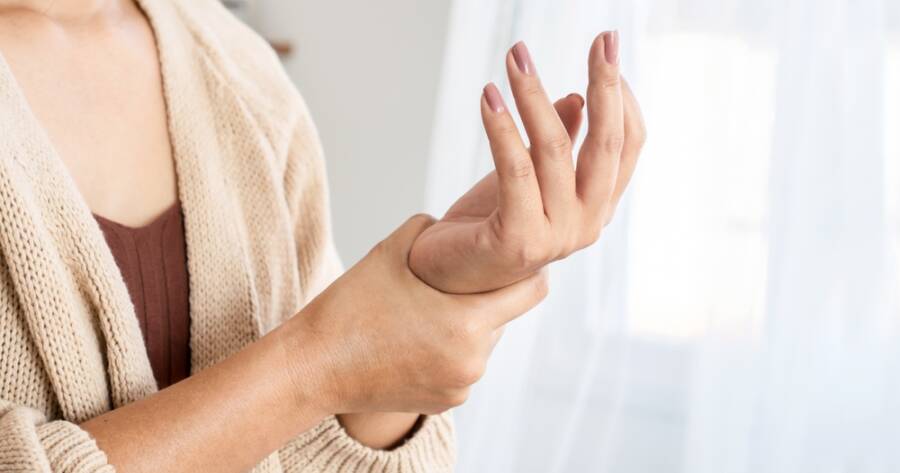Dermatomyositis is a rare inflammatory disease that primarily affects the muscles and skin, but its impact can extend to other organs. It typically presents with a variety of symptoms that might range from mild to severe. Understanding the early signs and symptoms of dermatomyositis is crucial for diagnosis and treatment, as it can help manage the condition more effectively and prevent complications.
What Is Dermatomyositis?
Dermatomyositis is an autoimmune disease where the body’s immune system mistakenly attacks its own tissues, causing inflammation in both the skin and muscles. It can also involve other organs such as the lungs, heart, and joints. The condition is classified as a type of idiopathic inflammatory myopathy, meaning the inflammation primarily affects the muscles and is not caused by an infection or another disease.
The exact cause of dermatomyositis is not fully understood, but it is believed to result from a combination of genetic and environmental factors, such as viral infections or exposure to certain toxins. The disease can affect people of all ages, but it is more common in adults between the ages of 40 and 60, and in children aged 5 to 15.
Common Signs and Symptoms of Dermatomyositis
Dermatomyositis has a range of symptoms that can vary in severity. The most common signs and symptoms include:
Muscle Weakness
One of the hallmark symptoms of dermatomyositis is muscle weakness, especially in the proximal muscles, which are the muscles closest to the body’s core. Affected individuals may notice difficulty with everyday activities, such as standing up from a seated position, climbing stairs, or lifting objects. The weakness is often gradual but can worsen over time if left untreated.
Skin Rash
Dermatomyositis is characterized by a distinctive rash that typically appears on the face, chest, back, and sometimes other areas of the body. The rash is often purple or red and may be itchy or painful. It may appear in a butterfly shape over the nose and cheeks, which is similar to the rash seen in lupus. The rash may also appear on the knuckles (known as “Gottron’s papules”), elbows, knees, and around the eyes (heliotrope rash).
Fatigue
Individuals with dermatomyositis often experience extreme fatigue or weakness, which can be debilitating. This tiredness is not the result of overexertion and may persist even with adequate rest. Fatigue can be compounded by muscle weakness, making daily activities more challenging.
Joint Pain
In addition to muscle weakness, many people with dermatomyositis experience joint pain or inflammation, which can affect mobility. This symptom may also be associated with swelling in the joints, particularly in the knees, elbows, and wrists.
Difficulty Swallowing
Some individuals with dermatomyositis develop difficulty swallowing (dysphagia) due to muscle weakness affecting the esophagus. This can lead to choking, aspiration, and difficulty eating or drinking. If left untreated, this symptom can lead to malnutrition and dehydration.
Shortness of Breath
In some cases, dermatomyositis can affect the lungs, leading to shortness of breath, coughing, and other respiratory issues. This is known as interstitial lung disease (ILD), which is a complication associated with dermatomyositis. ILD can be a serious condition, and prompt medical attention is essential.
Calcinosis
In rare cases, individuals with dermatomyositis may develop calcinosis, which is the formation of calcium deposits in the skin, muscles, or connective tissues. These deposits can cause pain, swelling, and hard lumps under the skin.
Treatment Options
While there is no cure for dermatomyositis, treatment options can help manage symptoms and prevent further damage to the muscles and organs. The primary goals of treatment are to reduce inflammation, alleviate symptoms, and improve muscle strength and function. Common treatment approaches include:
- Corticosteroids: Oral steroids are commonly used to reduce inflammation and muscle weakness.
- Immunosuppressive Drugs: Medications may be prescribed to suppress the immune system and prevent further damage to tissues.
- Physical Therapy: A tailored exercise program can help improve muscle strength and flexibility, especially for individuals experiencing muscle weakness.
- Other Medications: Depending on the severity of the disease, other medications like intravenous immunoglobulin (IVIG) or biologics may be used to target specific immune responses.
Living with Dermatomyositis
Although living with dermatomyositis can be challenging, early detection and appropriate treatment can help manage the condition and improve quality of life. Regular follow-up with healthcare providers, physical therapy, and lifestyle adjustments can help individuals with dermatomyositis lead fulfilling lives while managing symptoms.
Early Detection and Treatment for Better Management of Dermatomyositis
Dermatomyositis is a complex and potentially debilitating condition that can significantly impact the skin, muscles, and overall quality of life. By recognizing the common signs and symptoms early, individuals can seek prompt medical attention to begin treatment and prevent long-term complications. If you or a loved one is experiencing symptoms of dermatomyositis, it’s important to consult with a healthcare provider for an accurate diagnosis and personalized treatment plan.
